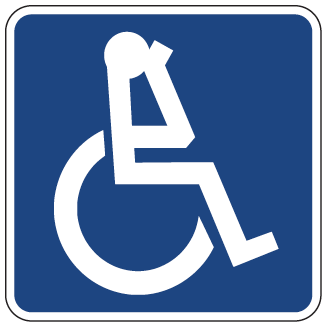
May 7, 2013
Design vs. Compliance: The Problems With So-Called “Accessible” Design
A stay in an “accessible” hotel room frustrates our editor-in-chief.
 As I check into the Renaissance Downtown, in Washington, D.C., the clerk informs me that she’s putting me in an accessible room. Do I mind? “No, not at all,” I answer, and think of my short stay here as another opportunity to check out ADA-compliant hotel rooms in this great big country, where access has been a civil right for more than two decades. During those years, I’ve been looking to find intelligent design, some sign that another human being understands that we come in all sizes and ages, with varied abilities. So I ask, each time, “How does this room provide comfort and safety for people with special needs, while also putting able-bodied companions at ease?” What I find is frustrating, sometimes horrifying.
As I check into the Renaissance Downtown, in Washington, D.C., the clerk informs me that she’s putting me in an accessible room. Do I mind? “No, not at all,” I answer, and think of my short stay here as another opportunity to check out ADA-compliant hotel rooms in this great big country, where access has been a civil right for more than two decades. During those years, I’ve been looking to find intelligent design, some sign that another human being understands that we come in all sizes and ages, with varied abilities. So I ask, each time, “How does this room provide comfort and safety for people with special needs, while also putting able-bodied companions at ease?” What I find is frustrating, sometimes horrifying.
I wind my way down a hallway where, even with the aid of my prescription glasses, I have a hard time figuring out whether I’m heading toward the elevator banks or my room. What if I broke my glasses? How would I find my way? There is no texture, no pattern, no special lighting—no system of way finding—designed to help me. When I reach the door, it looks like any other. But as I enter, I notice a large button on the wall, around waist height. It says “PUSH.” When I do, the door swings in with a clang, staying open for an uncomfortable length of time. I try to shove it closed, but it won’t budge until the timer lets it.
Clearly, the bathroom is wheelchair accessible, complying with the ADA’s requirement to provide a turning radius for the chair. As I step inside, I wonder why there’s a shallow ledge on the floor at the entrance. But there’s a much bigger problem: no shower. On this trip, a wheelchair user won’t be able to bathe if she expects to roll into the shower. There’s only a shallow tub surrounded by more grab bars than I can count. And the toilet, bracketed by even more grab bars, seems too low for someone about to transfer from a wheelchair.
On opening the closet door, I find a low bar, again around waist height, where I hang my outfit. Why aren’t there two clothes bars, one for the upright person (the room has a king-size bed), one for the wheelchair user, so that each can take care of his or her own needs?
On this balmy spring day, the AC is set at a freezing 64° F. I imagine a single wheelchair user struggling to get out of bed to still the sound of this deafening mechanical system in the middle of the night.
I have just experienced, again, the circumscribed world of design vs. compliance. My room’s colors and textures have been carefully chosen. A New Yorker cartoon, blown-up and framed, makes me chuckle as I sit at the shallow desk, and a lovely silk-screen of the U.S. Capitol connects me to place. What if the person, for whom this room was specifically arranged, could enjoy these same details rather than be frustrated by them?





